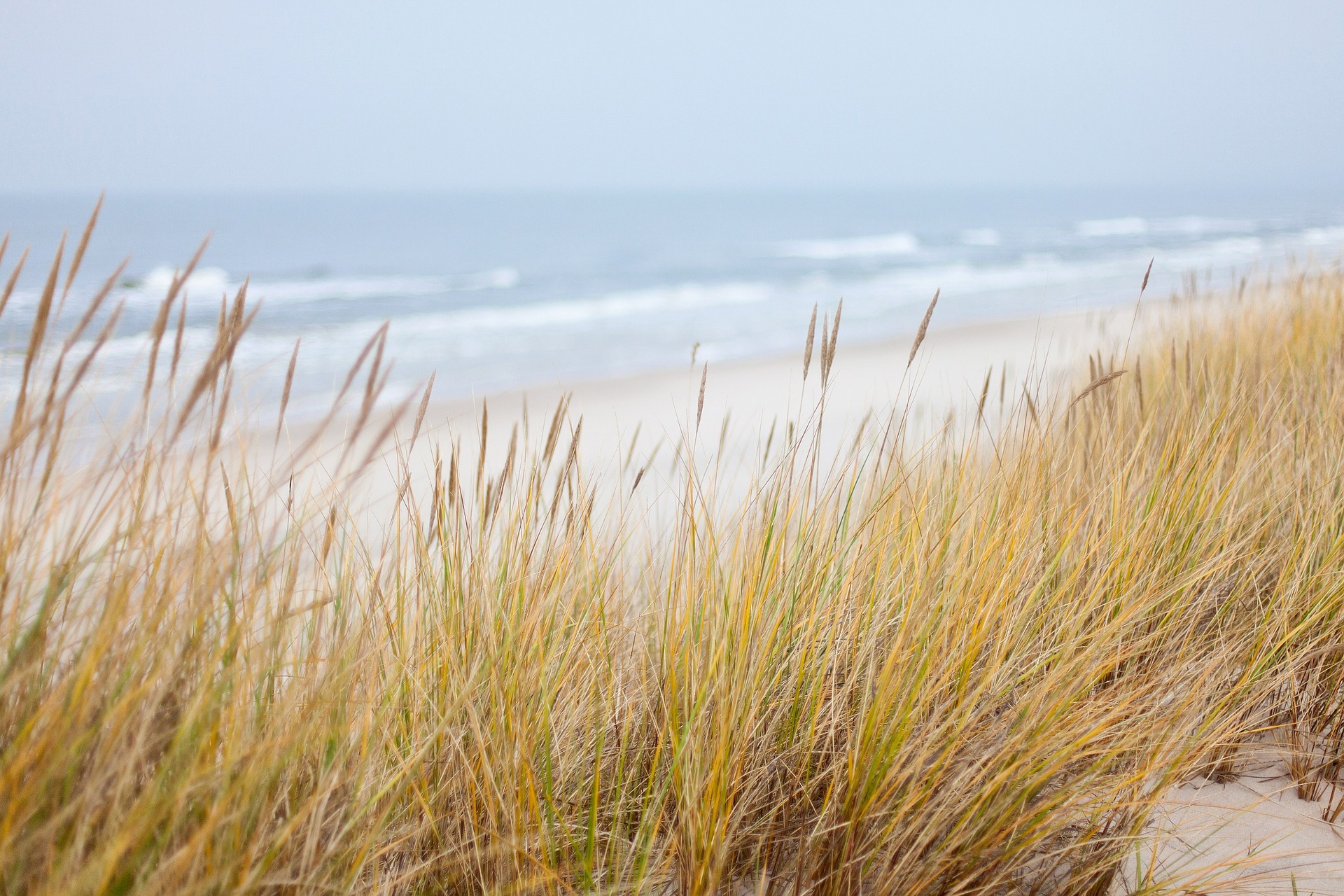
#7 All Things Sea Grass
 When we envision the beach, the images we conjure don’t often include grass, but nonetheless, grass plays an important role in beach ecosystems. Years of beach development has harmed shore ecosystems by removing and damaging sand dune grasses that help maintain the structure of beaches and avoid erosion. The threat of removing these grasses not only harms the animals that rely on them for shelter and food. but also puts people and infrastructure at risk, as beaches become more susceptible to storm damage and sands more easily shift without the grass root systems. In this activity, kids will learn about the consequences of damaging these ecosystems and create their own message about why saving sand dune grasses is important.
When we envision the beach, the images we conjure don’t often include grass, but nonetheless, grass plays an important role in beach ecosystems. Years of beach development has harmed shore ecosystems by removing and damaging sand dune grasses that help maintain the structure of beaches and avoid erosion. The threat of removing these grasses not only harms the animals that rely on them for shelter and food. but also puts people and infrastructure at risk, as beaches become more susceptible to storm damage and sands more easily shift without the grass root systems. In this activity, kids will learn about the consequences of damaging these ecosystems and create their own message about why saving sand dune grasses is important.
Instructions
- Have your kids close their eyes and imagine they are at the beach. What kinds of things do you see? (This can be a free write, or just a question and response depending on the age of the child. For younger children use prompts: What is on the beach? Do you see sand? Animals? Seashells? Umbrellas? Grass?)
- Read this short story about the consequences of removing sand dune grasses:
- Grass isn’t often thought about when picturing the beach, typically people think about sand, water, beach umbrellas, beach balls, sun and seashells, but for Sandy the sand crab, sand dune grasses are home. Like other sand dune crabs, Sandy grew up burrowing into the side of dunes where it is cool and damp, away from the sun. When not buried into the ground, she spent her days eating debris and insects that lived around her on the sand dune. For the first year of her life Sandy lived happily on the sand dune, with plenty of food and protection. However, in the second year of her life, the beach where she lived started to become more populated with people. Houses and hotels were being built all around her and more people were running around her home. Eventually the grasses around her were removed or damaged by people and she worried that without the grass supporting the sand, that another big storm could wash her home away. Luckily, by the third year of Sandy’s life, people realized that removing and damaging the sand dune grasses was hurting the beach and threatening their own homes, which also relied on the grasses to keep the shore in place. By planting new grass and taking care of the beach, the people helped protect both their homes and Sandy’s.
- Watch these two videos:
- This video explains coastal erosion.
- This video explain how grass can help limit erosion.
- Imagining you are still at the beach, draw or paint a postcard that includes dune grasses and that provides a brief explanation of why they are important to protect, based on what you learned from the story and video. If you want, you can share this postcard with friends and family or tag us on social media @ocean_matters.
- (Optional) Read this additional article for kids that explains the importance of seagrasses that also help protect against erosion. Older kids can learn more about the interdependence of the organisms that call the sand dunes their home here. As a way to reinforce their learning, have the older kids create an illustration of the relationships among the marine organisms that make the dunes their home.
Word Bank
Coastal erosion: Loss of land and sediment along the coast
Dune grass: A strong grass that binds shifting sand and helps avoid erosion
Arcadia Davies, Ocean Matters Youth Advocate Leader, recently graduated from Miami University with an interdisciplinary degree focusing on marine ecology and community engagement. She is passionate about connecting communities, especially youth, in ocean conservation projects. During college she practiced communicating science to the public through serving as the communication intern at The Island School in The Bahamas and taking numerous classes in marine ecology, creative writing, journalism, photography and community engagement. Arcadia has loved the ocean since a young age and strives to share that love with others.
